A little bit about American combat robots
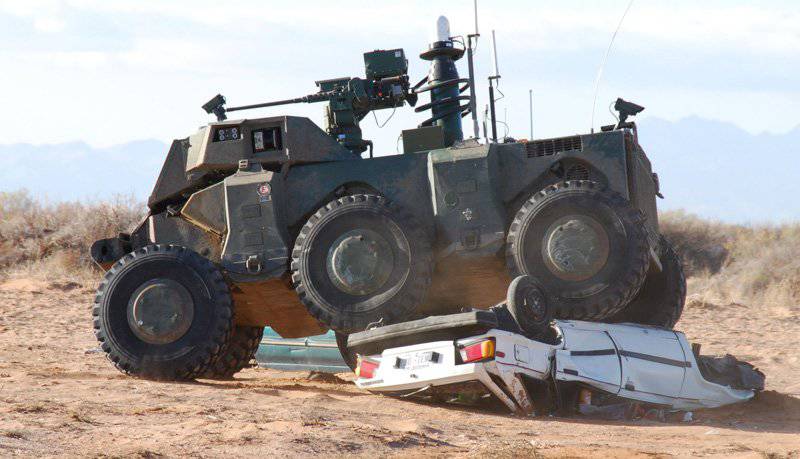
One of the most promising directions in the development of military equipment is remotely controlled vehicles. Such vehicles can fly, move on and under water, and also ride on land, performing various tasks, from reconnaissance to strikes. It so happened that the most attention is paid to flying remotely controlled equipment - unmanned aerial vehicles. However, a similar approach can be applied to almost any military equipment, including ground. At the same time, ground-based remotely controlled systems not only exist, but are also actively used in a real combat situation. Consider the most famous and interesting models of such robots American made.
Gladiator
The development of the first American successful combat robot project started in 1993 year. The Pentagon launched the TUGV program (Tactical Unmanned Ground Vehicle - Tactical Unmanned Land Vehicle), the purpose of which was to equip special forces units with a multi-purpose lightweight remote-controlled robot. The TUGV apparatus was to be the carrier of various equipment or weapons, capable of accompanying infantry units and helping them in the performance of combat missions. The project involved several firms, including Lockheed Martin and Carnegie Mellon University. All of them presented their versions of the car, which later became the basis for a full-fledged project. One of the reasons for such "throwing" was the customer's doubts about the specific appearance of the new device. It is worth noting that the most difficult issue was resolved at the very beginning. It consisted in the concept of application and, as a result, the design of the robot. If it was considered as an easy multipurpose support tool, then it could be made simple, cheap and, at the same time, unprotected. An alternative to this was a robot with anti-bullet reservation, a more powerful engine and a corresponding price. As a result, the Pentagon chose the second approach to the creation of a combat robot.
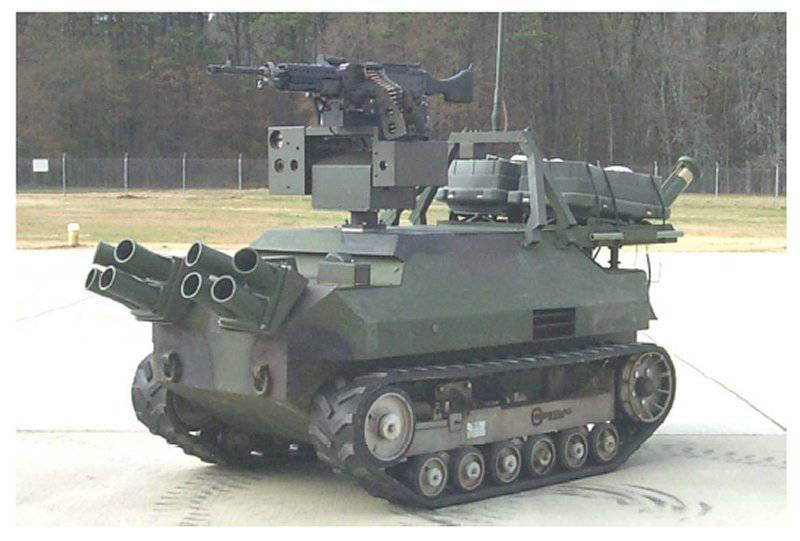
The first version of the TUGV project robot, named Gladiator's own, was made on a tracked base. It was a small device with a remote control system, a video camera and a low-power gasoline engine. As a weapon, he could carry a rifle caliber machine gun. In general, for the mid-nineties, the first version of the "Gladiator" was not bad, but there were too many complaints. Because of this, the firms participating in the program made the second option. Gladiator-2 received a completely new six-wheeled chassis with a diesel engine. In addition, the second version of the "Gladiator" was equipped with a multi-function installation SWARM, designed for mounting a machine gun of caliber up to 12,7 mm. Besides weapons The new robot carried a day and night surveillance system and smoke grenade launchers. All this was located on a stabilized platform. The need to install a serious small arms has led to an increase in the size of the entire machine. The combat weight of the second “Gladiator” could reach one ton, and the geometrical dimensions of the machine without additional equipment were equal to the meter 1,8x1,35x1,2. The third version of the robot Gladiator had even greater size and weight. Now in a fully loaded state, the robot weighed as much as three tons. An interesting innovation in the design was the electric transmission. This did not lead to a significant increase in maximum speed, but it helped reduce the noise produced by the machine through the use of batteries.
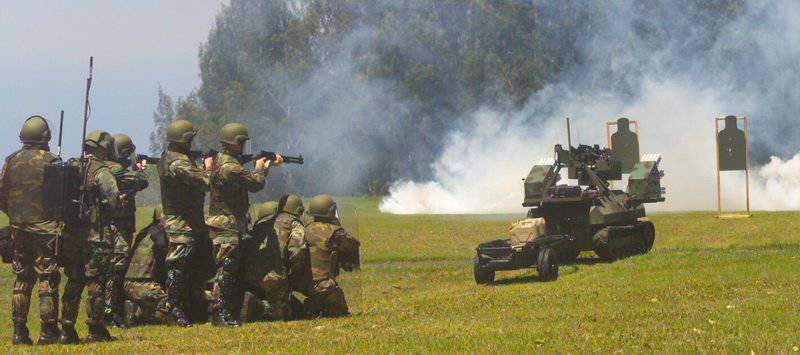
The latest version of the Gladiator machine was developed by Carnegie Mellon University, which eventually received an order to continue work on the third iteration of the project. After a series of events of the mid-two thousand years, the whole Gladiator program found itself in an ambiguous position connected with the reduction of funding. With favorable developments, the Pentagon hoped to purchase at least two hundred such robots to be used by the Marine Corps.
Crusher
Developed in the middle of the two thousandth's. At the request of DARPA, Carnegie Mellon University staff members have created a universal robotic wheeled platform. It was assumed that in the future this apparatus could be used to perform various tasks in a real situation or, at a minimum, take it as a basis for new developments. The armored robot Crusher turned out to be quite large (more than five meters in length and about one and a half high) and rather heavy - the maximum curb weight is about six tons. At the same time, the own mass of the platform is more than two times less: the fact is that due to the experimental nature of the project, the American designers made the armor a separate element of the complex. As a result, the Crusher can carry up to 3600 a kilogram of armor and cargo. The body of the remotely controlled machine itself is made of a titanium frame (frame), aluminum (most of the plating details) and steel (bumpers, etc.).
The mobility of the Crusher is provided by the original six-wheel undercarriage, each of which has an independent suspension. In addition to providing depreciation, the suspension can change the ground clearance of a car from zero to 75 centimeters. It is assumed that by changing the ground clearance, the Crusher, or a vehicle based on it, will be able to creep under obstacles or pass over them. Naturally, provided that the obstacle has the appropriate size. In the hub of each wheel is a traction motor with a power of about 250 horsepower. Thus, the total power of all motors is equal to 1680 HP. Electric power supply of electric motors is carried out using batteries and a generator with power up to 58 kilowatt. The latter is powered by a 72-strong diesel. The option with electrotransmission was chosen to ensure the least noise movement: if necessary, the operator turns off the rattling diesel and uses the battery charge. Depending on the load, terrain conditions and other factors, the travel distance per battery charge can be from three to sixteen kilometers at speeds up to 42 km / h. Under certain conditions, Crusher can carry out a continuous march, alternately charging the batteries and using them, until a fuel reserve is developed.
On board the wheeled "Crusher" there is a set of equipment that allows you to collect all the necessary information for management. First of all, these are video cameras, in whose field of view almost the entire front hemisphere falls. Also, several laser range finders, accelerometers, gyroscopes, etc. are standard on the machine. All telemetric information is transmitted via radio to the control panel. The Crusher machine operator works with the controls, in most cases completely identical to the corresponding car units. Video and data on speed, orientation, etc. displayed on six monitors. Actually control is carried out with the help of the steering wheel, pedals and some similarity of the gear knob. Crasher software provides several autonomous work algorithms. In case of loss of the control signal or at the request of the operator, the machine can automatically drive to a given point, overcoming obstacles. For example, the base where the Crusher will return in case of communication problems can be chosen as the end point.
During the final design stage, the Crusher robot received an armored turret with a large-caliber machine gun and a reconnaissance complex. In the second case, a small swiveling tower with a telescopic rod, equipped with a video surveillance system and laser measurement and targeting equipment, was installed on the standard landing place for additional armament. For obvious reasons, Crusher was built in the number of several copies and was used only as a platform for working out new technologies. This step was correct, because already in the early stages of testing a huge number of problems were discovered, primarily with the software and the joint operation of various systems. Nevertheless, by the end of the two thousand years, the Crusher project was brought to mind and became the basis for other developments.
APD
Autonomous Platform Demonstrator - A standalone demonstration platform. In fact, is a further continuation of the project Crusher. By issuing terms of reference for the APD, the DARPA agency demanded to increase the maximum speed, improve the permeability and ensure the possibility of operation in the troops. The first two problems were solved by replacing the engines and finalizing the chassis. As a result, the maximum speed increased to 80 km / h. It also resolved several other technical issues related to improving the performance of the Platform demonstrator. The fact is that this multipurpose robot was created as part of the FCS program (Future Combat System - Fighting System of the Future) and was to become a full-fledged element of equipment for some units. Among other things, DARPA indicated the need to transport two APD complexes on the same C-130 aircraft. Thus, the dry weight of the machine itself and the control panel should not exceed 8,5-9 tons.
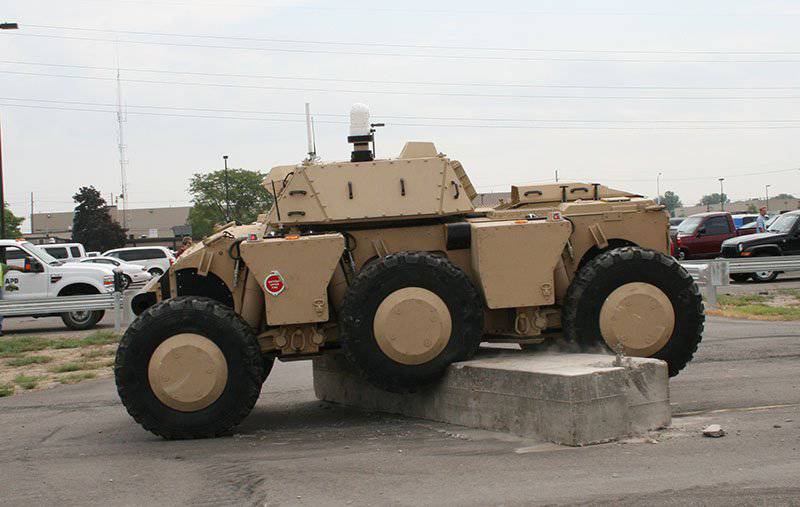
Structurally, the APD is a fairly modified Crusher. Approximately the same can be said about the control system. The external differences of the equipment are almost not noticeable, but the software part has undergone serious improvements, having received some great opportunities for autonomous actions. According to some sources, in the future, electronic brains of the APD may even be able to assess the danger of a situation and then move to a quieter place. It is worth noting, it is not entirely clear how exactly this assessment will be made. As for the target equipment, the “Autonomous Demonstration Platform” can carry a turret with weapons or reconnaissance equipment. In addition, there is some internal volume for the carriage of cargo.
After the abolition of the FCS program, the remote-controlled APD machine was in limbo. On the one hand, it no longer so clearly fit into the perspective image of the American armed forces, but on the other hand, a lot of money and effort has already been invested. As a result, the APD project changed its status and remained an experimental development. The development of the "Platform" continues to the present. Its creators argue that if the military again shows interest, then the APD can go to the troops by the year of 2020. However, the Pentagon has not yet indicated its intention to change the status of a promising project.
XM1216
It is necessary to make an important caveat: the US military orders not only heavy remote-controlled vehicles. For a number of tasks, their size is not only useless, but even harmful, if not dangerous. For this reason, the creation of several projects of light military-purpose robots began long ago. As an example, consider the program SUGV (Small Unmanned Ground Vehicle - Small Unmanned Land Vehicle).
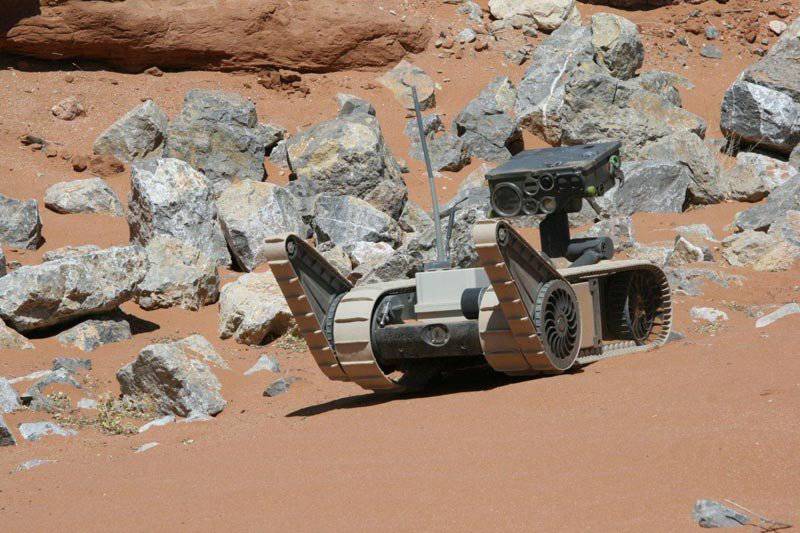
In the course of the implementation of the global FCS project, the leadership of the American armed forces wanted to get a small remotely controlled vehicle, primarily intended for reconnaissance purposes. The main requirement for the SUGV was light weight - it was necessary to ensure that the apparatus could be transported by the forces of soldiers. The order for the development of such a complex was received by iRobot, and the project was given the army name XM1216. The design of a small reconnaissance robot goes back to the PackBot line of multipurpose robots. The XM1216 has a tracked propulsion unit connected to an electric motor. The design of the undercarriage is interesting: in addition to the two main tracks, an additional pair is installed on the robot. It is mounted on one of the ends of the main tracks and is designed to overcome various obstacles, for which it has the ability to turn within a small sector. Additional tracks can be used as a lever for repulsion when climbing or for smooth descent from any obstacle.
All target equipment of the XM1216 robot consists of a video camera mounted on a small articulated boom lift. If necessary, the robot can carry up to 2,5-3 kg of cargo. The signal from the camera is transmitted via radio to the operator control complex. The equipment for controlling the robot consists of a main unit with a small LCD screen and the console itself, which resembles game controllers-gamepads according to the layout. The total weight of all the XM1216 SUGV complex equipment does not exceed 15-16 kilograms, which makes it possible to transport both the console and the robot itself with just one person. For added convenience, all systems are placed in a special container-backpack.
In February 2012, the Pentagon completed the tests of the XM1216 robot and signed a supply contract. The exact number of ordered complexes was not announced, but there is every reason to believe that the score goes to tens or even hundreds of units. The amount of the agreement is also not called.
***
It is worth noting that the above-described robots are only the tip of the iceberg. The fact is that the total number of types currently being developed is equal to several dozen, and a detailed examination of each separately would take too much time. By the 2025-30 years, the Pentagon plans to adopt at least one hundred new models of robots for various purposes and with different characteristics. Preparations for such large-scale equipment of troops have already begun, which led to the emergence of a huge number of types.
On the materials of the sites:
http://otvaga2004.ru/
http://globalsecurity.org/
http://usmc.mil/
http://army.mil/
http://dailytech.com/
http://defencetalk.com/
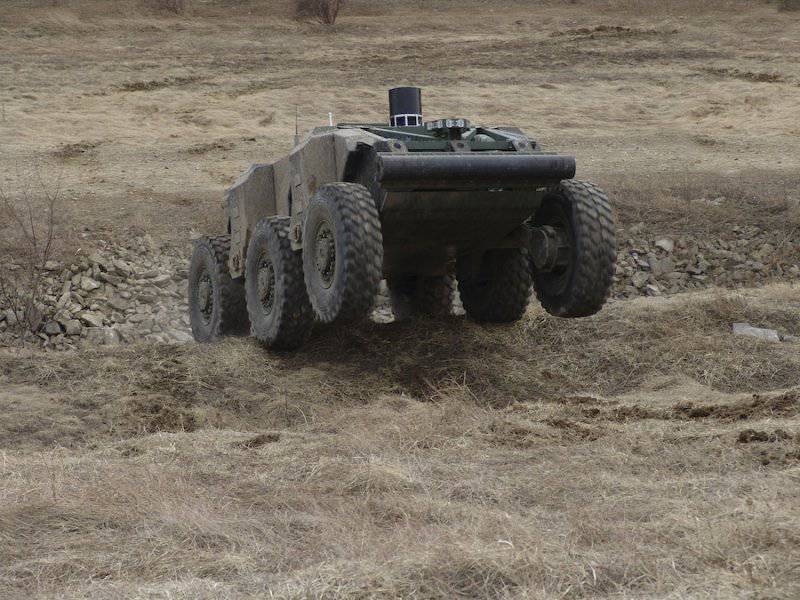
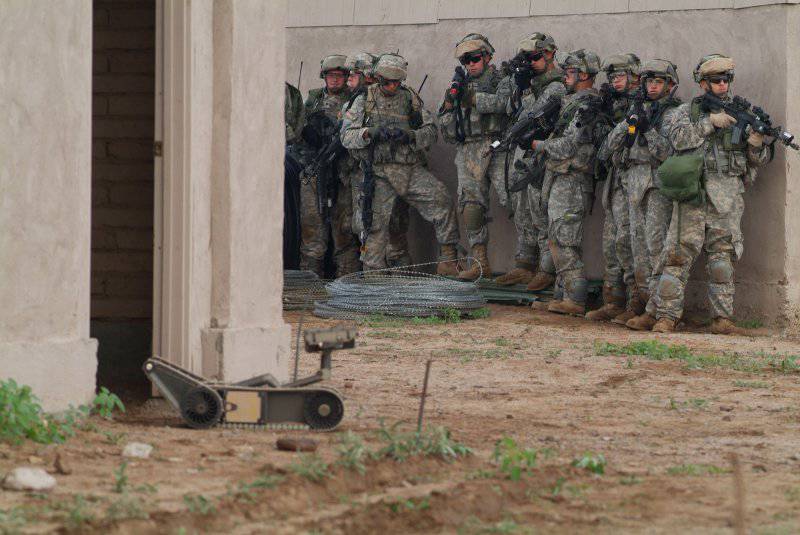
Information